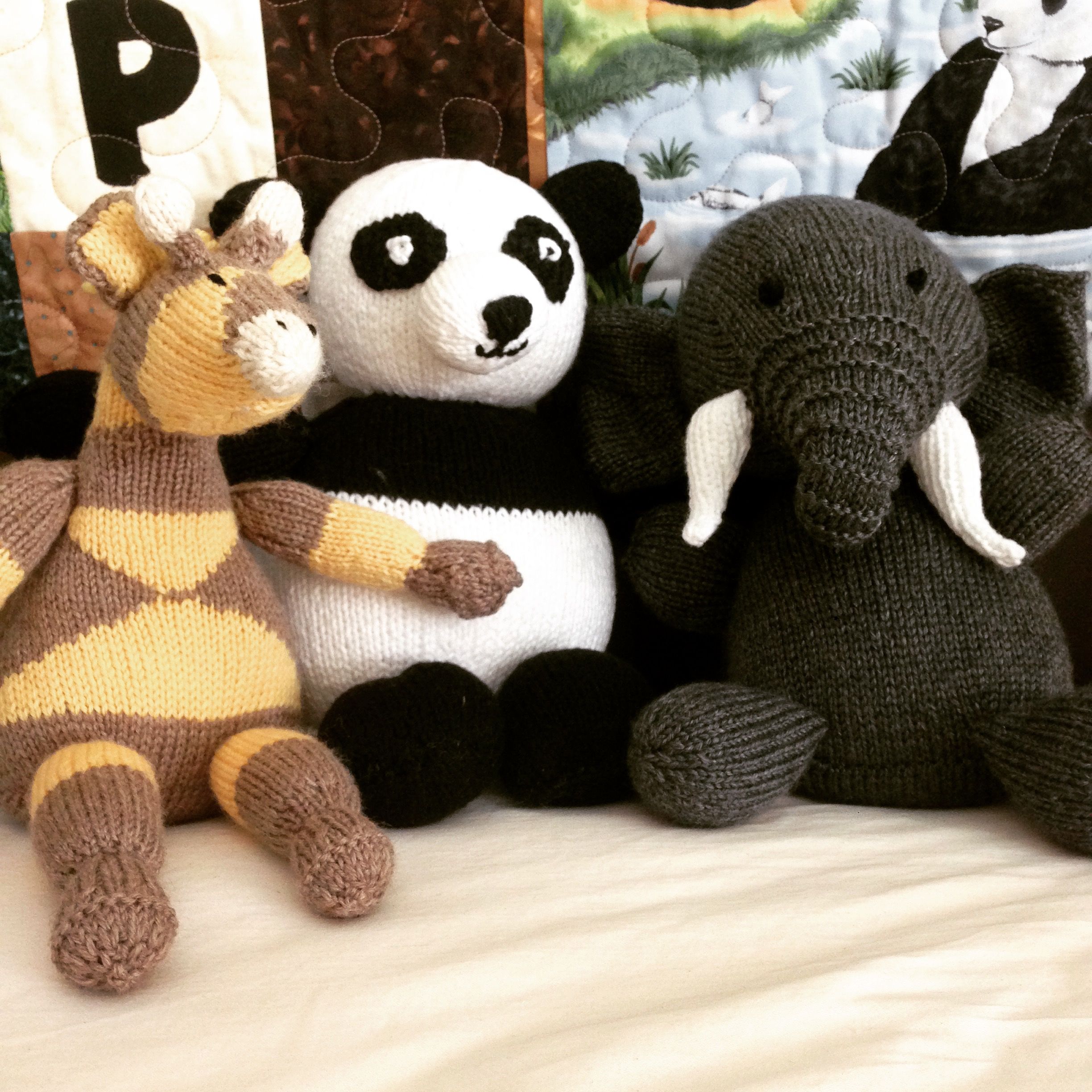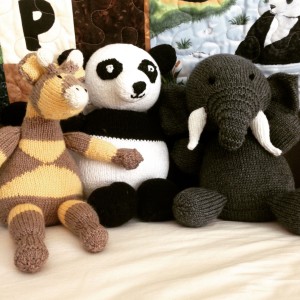
Tips for Knitting Wild Animals
My 3D knit mojo rolled along over the winter. Most recently, I turned back to Knitted Wild Animals, by Sarah Keen.
Sarah’s patterns are easy to knit but need a chunk of time to assemble. These three animals used almost an entire bag of polyfill (I chose not to stuff them with wool, as the panda was really quite big and I wondered if the wool might get a bit felted over time).
The last time I knit patterns from this book, there were mental notes about what I might do differently next time. Did I remember them? Of course not.. but this time I’m writing it down.
- Leave 8″ long tails at the cast on and bind off edges to seam your pieces together.
- If you have difficulty identifying the cast on and bind off edges, tie a bow on the cast on tail to help you remember which is which.
- Tie sets of arms, legs, horns… everything that’s knit in twos and keep them together until the seaming begins
- Consider knitting pieces in the round on double pointed needles (the shorter, the better). The legs, arms and horns could have been knit in the round for the giraffe, elephant and panda. The body sections for the panda and elephant could be, too. Just put markers in between the 2 pieces so your increase and decrease points are easy to identify.
So, there! Now, have you knit patterns from this book? I’d love to hear your tips about what worked for you.




